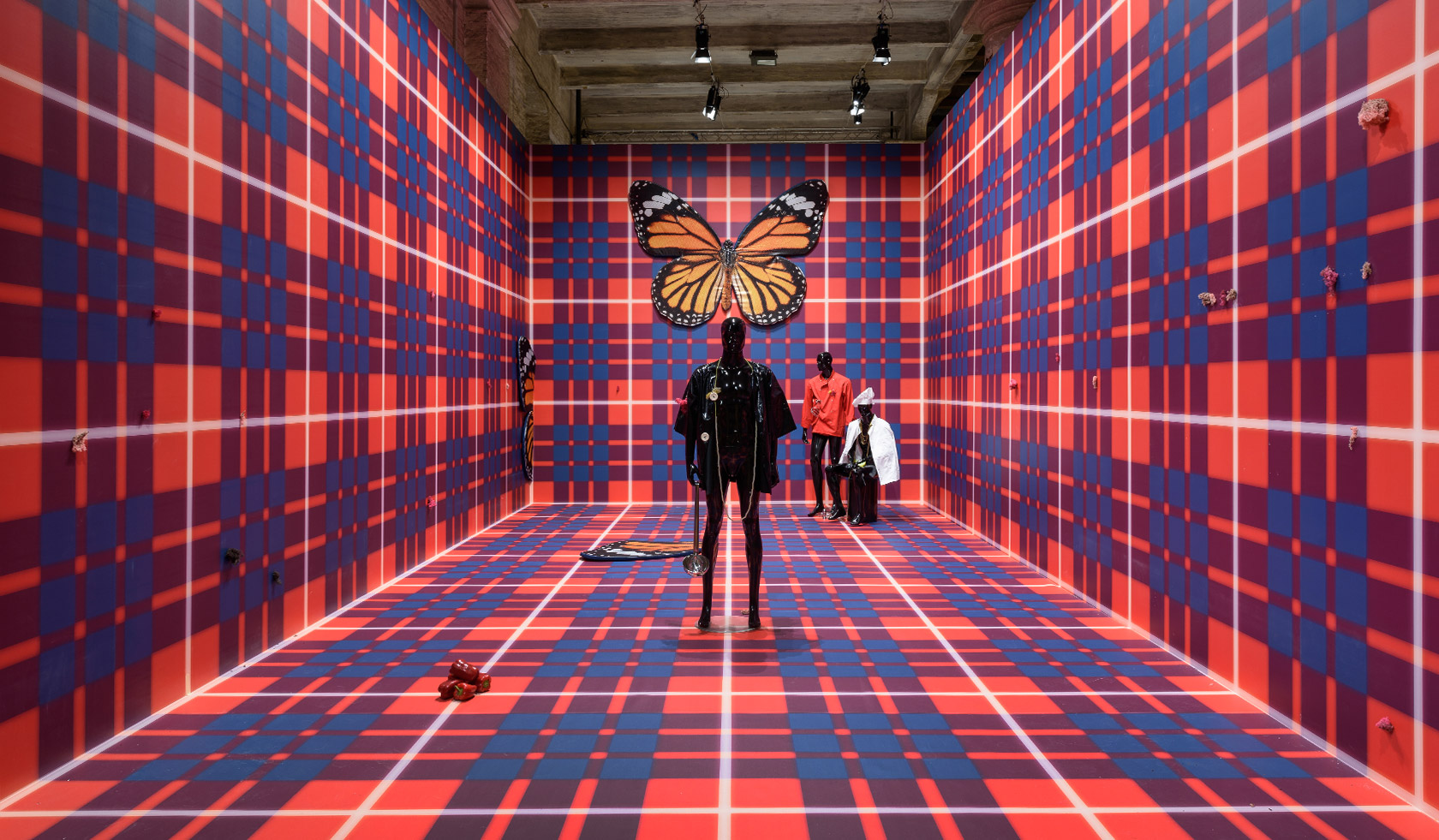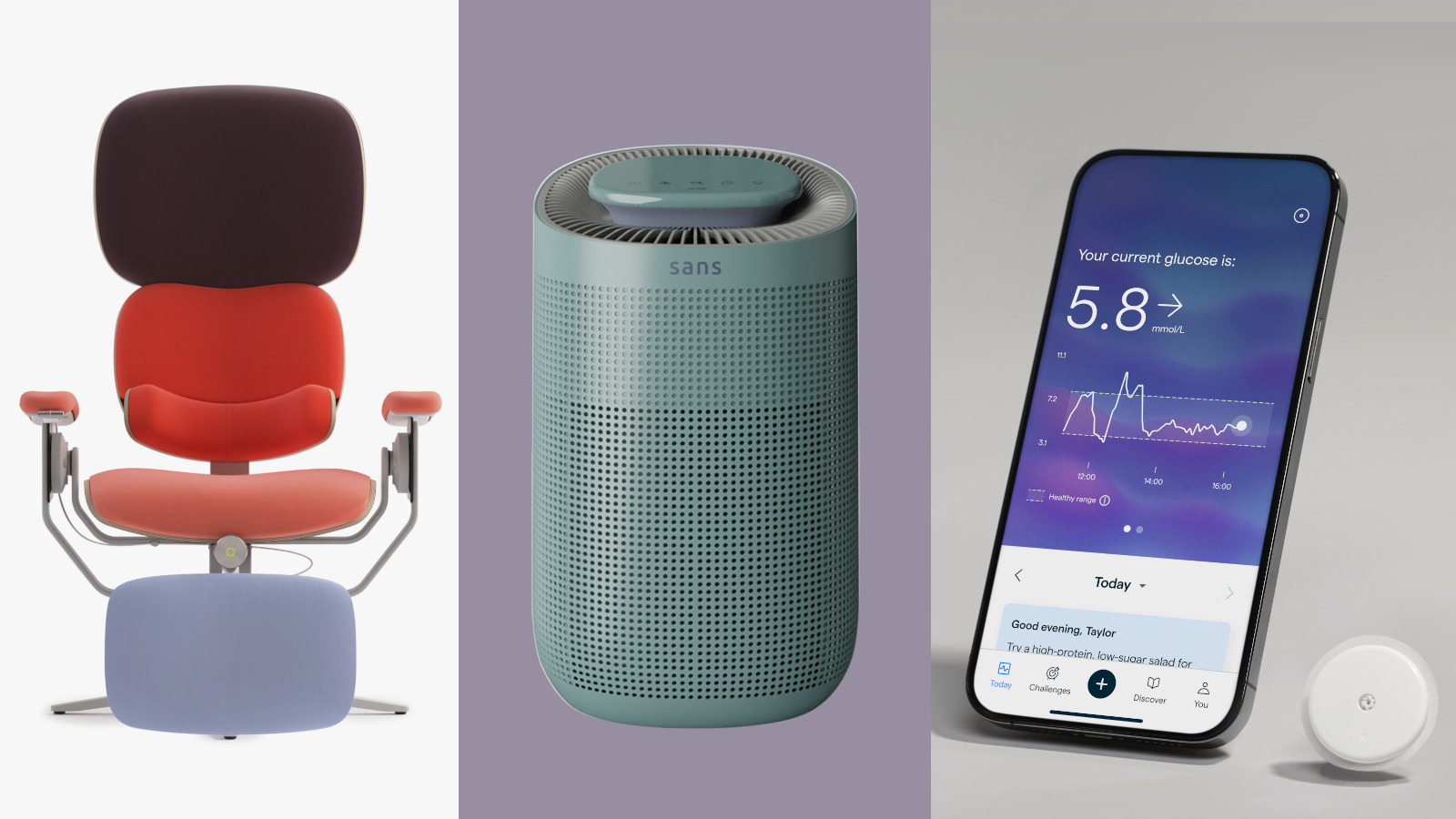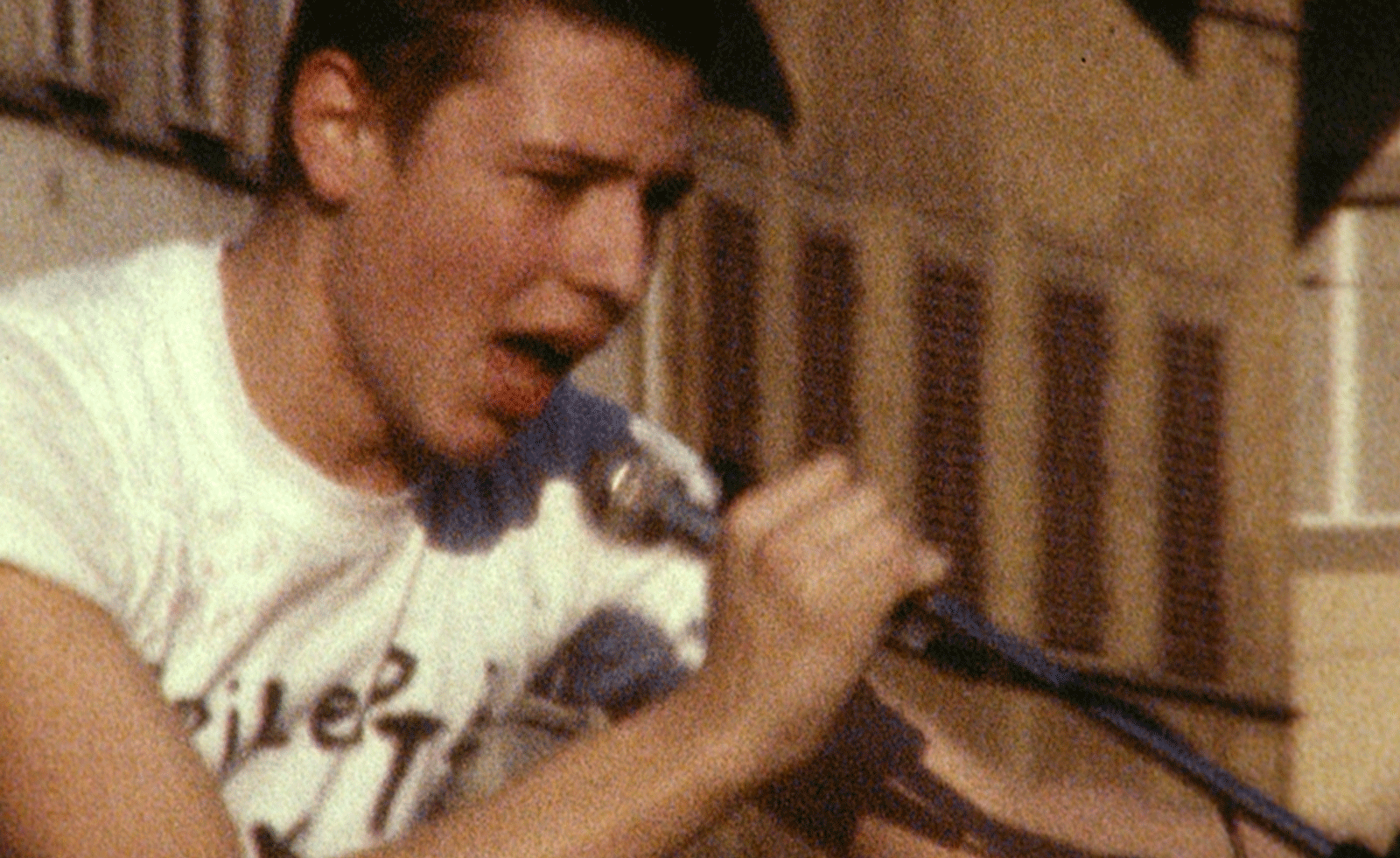Eva Rothschild thinks big for the Irish Pavilion in Venice

Clusters of trial-and-error maquettes and memories of spray paint frenzies dot the floors and walls at the studio of Irish sculptor Eva Rothschild. There’s a paint-dappled radio permanently mumbling, and a sculpture dangling from the ceiling that resembles one of those wire head massagers that make your neck tingle.
The studio is part of an eight-storey, monolithic block overlooking London’s Regent’s Canal, built after the Second World War to accommodate small-scale East End industries. Outside, gentrification marches on as the last shreds of gas-works London are tidied away. Inside, Regent Studios seems unaffected, still a community of makers and small businesses. ‘Someone should make a film about this building,’ says Rothschild. ‘When you say you’re here, so many people say “oh I went to a party there”... everybody’s done something.’ She first visited the block in 2001 to edit a film for her first London exhibition, at the Showroom gallery. It has been her permanent base for the past eight years, though it seems wholly incompatible with the substantial scale of her practice. She agrees. ‘It’s insane, but we’ve managed pretty well,’ she says.
Rothschild likes things old school, preferring to plan and make in analogue. She favours physical models and long periods of drawing, doing both in privacy. For her, mystery is everything. ‘I take a very romantic view of the artwork. I’m not interested in demystifying it by showing its process.’
She straddles the threshold of old and new, alluding to classical architecture and contemporary pop culture. There are echoes of Carl Andre’s measured rigidity, Eva Hesse’s unsettling corporeality and Phyllida Barlow’s crude environmental aesthetics. Rothchild practices a scaled-up minimalism that is all about the body: the bodies making the work and the bodies engaging with it.
She’s excited and nervous. Her pavilion for the Venice Biennale, titled The Shrinking Universe is already en route to its destination, a month and half before it’s unleashed on the public. Premature? Maybe, but these are unpredictable times at Britain’s borders, and she isn’t going to let Brexit delay her biggest career moment to date. But seeing her finished work fly the nest is not quite the home straight, ‘It’s like having a plan for a story, but not knowing exactly what you’re going to say yet,’ she says.

A detail of the Amphi blocks, which are cast in polyutherane resin and spray painted to mimic rotting polystyrene – ‘It’s a huge environmental issue,’ says Rothschild.
The past few Irish Pavilions have skewed political. In 2013, Surrealist photographer Richard Mosse staged a hallucinatory take on war reportage and in 2015, Sean Lynch told a multimedia tale of British and Irish marginalisation. Rothschild, however resists a narrative approach, preferring to define herself as a ‘materials-driven sculptor’. Any whiff of subplot might be in your head. ‘I think there’s been a tradition of having work that’s very rooted in certain aspects of Irish life – mine doesn't conform to that.’ For her, it’s all about tools, her studio and ‘casting massive shapes’.
These sculptures are inherently tactile, begging to be swerved around, sat on and passed through. The catalyst for Rothschild’s work is the moment between people and the art, what she refers to as ‘activation’; with it, viewers become both spectators and the spectated.
Viewers’ responses over her 25-year career have ranged from indifference to unsolicited destruction. She recounts one particular intervention at the newly-opened Hepworth Wakefield when she presented Wandering Palm in 2011: ‘Someone tried to set one of my works on fire, that was quite weird,’ she recalls, ‘they held a lighter to it. It didn't burn... it just melted a bit.’ A year later, unfazed by this attempt at creative assassination, Rothschild briefed a group of young boys to enter London’s Whitechapel Gallery and ‘let loose’ on her sculptures. They looked, poked, played then gradually dismantled her work in a performance of unadulterated physicality. Venice – Rothschild hopes – will not be one of those shows.
RELATED STORY

Rothschild’s sculptures are inherently tactile, begging to be swerved around, sat on and passed through
Sandwiched between Slovenia and the exit, Rothschild has 12m x 15m of the Venetian Arsenale to play with. She is no stranger to handling obscure spaces, and is a sucker for an architectural challenge. Lest we forget her freewheeling intervention that punctured Tate Britain’s Duveen Gallery in 2010, or her recent solo exhibition, ‘Kosmos’ at the Australian Centre for Contemporary Art, a jagged red-rust building that she says ‘had maybe one right angle’.
The Arsenale has heritage status and its own set of constraints, among them crumbling plaster and rugged brickwork. ‘You’re not allowed to touch anything’, she says. ‘It felt like this space needed a bit of slapping about, a bit of rough treatment.’
On first entry to The Shrinking Universe you are hit with a concrete wall and a decision: left, or right. The passage you choose will determine how you move through the materials and ultimately, how they move you. You're in Rothschild’s hands now, and whether you like it or not, you’re as much a part of the work as the art itself.
Beyond the barricade (Drift) is a thundering stack of blocks dappled in gestural lashes of spray paint. These are cast in robust polyurethane resin to mimic rotting polystyrene, a material that both entices and disgusts Rothschild. ‘It’s this thing we just chuck away, but it’s incredibly long lasting,’ she says. ‘It’s a huge environmental issue.’ The title, Amphi (as in amphitheatre) references classical antiquity, urban decay and suggests a space for meeting. Rothschild has rendered this piece sturdy enough to support bodies, ‘it’s been a difficult negotiation, but we’ve done everything we can to make it so people can occupy them,’ she says.
Further in you find Spektor, a totemic pile of tottering ‘heads’. These have been cast in bronze following a traditional lost wax technique, but you wouldn't know it. Rothschild has concealed any value, material hierarchy and trace of burnish under a layer of spray paint. Another work, Princess is a spindly, awkward steel structure seemingly supported by nothing at all. It pierces the ceiling like a dismembered pylon, disarming viewers with shards of glossy colour. All this rigidity is grounded by black bulbous cylindrical volumes and tempered by soft, waxed cotton ‘gym mats’.
The fabric elements in the work form the basis of Ireland at Venice’s visual identity, created by London graphic design studio APFEL (A Practice for Everyday Life). The team have produced printed materials, on-site graphics, a publication and the all-important tote bag inspired by Rothschild’s vibrant graphic print depicting a ‘generic Grecian palace’. ‘With Venice everyone has their thing about the bag,’ Rothschild remarks, ‘I never realised that people focus so much on this.’
Rothschild’s pavilion will prove her deep, instinctive feel for shaping stuff with a dizzyingly complex set of ingredients. She makes light work of heavy materials and revels in contradictions: disposability and permanence, purpose and repurpose. There might be a glimpse of urban anxiety, a fleck of consumer culture criticism or a splattering of political protest, but it’s up to you to find it. What she can give you is beyond sculpture, release from the burden of symbolism and a thorough schooling in the art of pure materiality.
A version of this article originally featured in the June 2019 issue of Wallpaper* (W*243), on newsstands from Thursday 9 May 2019
INFORMATION
‘Eva Rothschild: The Shrinking Universe’ is on view at the Venice Biennale from 11 May – 24 November. For more information, visit the Ireland at Venice 2019 website
Receive our daily digest of inspiration, escapism and design stories from around the world direct to your inbox.
Harriet Lloyd-Smith was the Arts Editor of Wallpaper*, responsible for the art pages across digital and print, including profiles, exhibition reviews, and contemporary art collaborations. She started at Wallpaper* in 2017 and has written for leading contemporary art publications, auction houses and arts charities, and lectured on review writing and art journalism. When she’s not writing about art, she’s making her own.
-
 Can the film 'Peter Hujar's Day' capture the essence of the elusive artist?
Can the film 'Peter Hujar's Day' capture the essence of the elusive artist?Filmmaker Ira Sachs and actor Ben Whishaw bring Peter Hujar back to the front of the cultural consciousness
-
 New tech dedicated to home health, personal wellness and mapping your metrics
New tech dedicated to home health, personal wellness and mapping your metricsWe round up the latest offerings in the smart health scene, from trackers for every conceivable metric from sugar to sleep, through to therapeutic furniture and ultra intelligent toothbrushes
-
 Out of office: The Wallpaper* editors’ picks of the week
Out of office: The Wallpaper* editors’ picks of the week'Tis the season for eating and drinking, and the Wallpaper* team embraced it wholeheartedly this week. Elsewhere: the best spot in Milan for clothing repairs and outdoor swimming in December
-
 A forgotten history of Italian artists affected by the HIV-AIDS crisis goes on show in Tuscany
A forgotten history of Italian artists affected by the HIV-AIDS crisis goes on show in Tuscany‘Vivono: Art and Feelings, HIV-AIDS in Italy. 1982-1996’, at Centro per l'Arte Contemporanea Luigi Pecci in Prato delves into the conversation around the crisis
-
 Venice Film Festival brings auteurs, daring debuts and unforgettable stories
Venice Film Festival brings auteurs, daring debuts and unforgettable storiesVenice Film Festival is in full swing – here are the films shaping up to be the year's must-sees
-
 Creativity and rest reign at this Tuscan residence for Black queer artists
Creativity and rest reign at this Tuscan residence for Black queer artistsMQBMBQ residency founder Jordan Anderson sparks creativity at his annual Tuscan artist residency. Wallpaper* meets him to hear about this year's focus.
-
 Rolf Sachs’ largest exhibition to date, ‘Be-rühren’, is a playful study of touch
Rolf Sachs’ largest exhibition to date, ‘Be-rühren’, is a playful study of touchA collection of over 150 of Rolf Sachs’ works speaks to his preoccupation with transforming everyday objects to create art that is sensory – both emotionally and physically
-
 Architect Erin Besler is reframing the American tradition of barn raising
Architect Erin Besler is reframing the American tradition of barn raisingAt Art Omi sculpture and architecture park, NY, Besler turns barn raising into an inclusive project that challenges conventional notions of architecture
-
 Photographer Mohamed Bourouissa reflects on society, community and the marginalised at MAST
Photographer Mohamed Bourouissa reflects on society, community and the marginalised at MASTMohamed Bourouissa unites his work from the last two decades at Bologna’s Fondazione MAST
-
 Ten super-cool posters for the Winter Olympics and Paralympics have just been unveiled
Ten super-cool posters for the Winter Olympics and Paralympics have just been unveiledThe Olympic committees asked ten young artists for their creative take on the 2026 Milano Cortina Games
-
 What is recycling good for, asks Mika Rottenberg at Hauser & Wirth Menorca
What is recycling good for, asks Mika Rottenberg at Hauser & Wirth MenorcaUS-based artist Mika Rottenberg rethinks the possibilities of rubbish in a colourful exhibition, spanning films, drawings and eerily anthropomorphic lamps